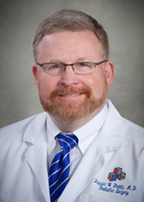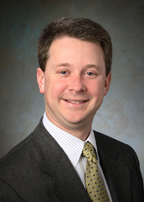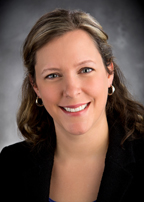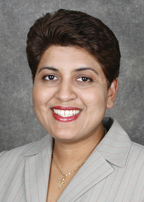 When our Physician Advisory Board suggested we write about caring for the children of Hampton Roads, we knew we could dedicate an entire issue to the topic and not scratch the surface. We had to narrow our approach, so after thoughtful consideration, we decided to focus on four difficult conditions that affect the young, and the care available locally.
When our Physician Advisory Board suggested we write about caring for the children of Hampton Roads, we knew we could dedicate an entire issue to the topic and not scratch the surface. We had to narrow our approach, so after thoughtful consideration, we decided to focus on four difficult conditions that affect the young, and the care available locally.
Chest Wall Deformities
Pectus excavatum, commonly known as sunken chest, affects one to three children in a thousand, mostly boys, usually Caucasian or Asian. In 1987, Donald Nuss, MD, a pediatric surgeon at Children’s Hospital of The King’s Daughters, dramatically changed the way these children were treated when he developed the procedure that now bears his name. In contrast to the open repair technique, which involved incising and exposing the chest wall, removing cartilage ribs and cracking the sternum, the Nuss procedure requires two small incisions that allow the surgeon to insert a curved bar beneath the ribs and sternum. The bar is then flipped over and held in place until the bones and cartilage remold themselves in the new position.
CHKD surgeons have continued to build upon the foundation that Dr. Nuss established, both refining and expanding the procedure. In the nearly three decades since Dr. Nuss first performed his procedure, CHKD has become the busiest center in the country for treating pediatric patients with chest wall deformities, averaging 125 surgical cases per year. Patients come from across the Americas, and from Europe and Asia as well.
CHKD attracts another subset of patients – those who have suffered the unfortunate sequelae of previous failed chest wall procedures. One case inspired CHKD pediatric surgeon Frazier Frantz, MD to develop an entirely new procedure, utilizing customized titanium implants to reconstruct the sternum and ribs for treatment of a devastating case of floating sternum and flail chest. Patient 0001, so named because he was the first to undergo this innovative type of repair, came to CHKD after three failed surgeries. After these procedures, his cartilage ribs and sternum failed to grow normally, and he was left with no cartilage ribs and a very short sternum, both major challenges to conventional repair techniques. From a functional standpoint, he suffered from chronic chest pain, severe respiratory compromise that was activity and lifestyle limiting, and inadequate structural protection for his internal organs.

Dr. Frantz took a visionary approach, enlisting the help of Biomet Microfixation, manufacturers of the Nuss bar. After reviewing the patient’s MRI and CT, and working with Dr. Frantz for months, the Biomet engineers crafted four titanium plates that would be attached to the patient’s remaining sternum and ribs. Fitted together, the plates resembled a chest shield, which would be worn internally. Dr. Frantz and his surgical team first fractured the patient’s sternum to create a smooth surface for the titanium plates to rest upon. The four plates were then attached to the sternum and bony ribs with more than 70 screws of varying lengths, all mapped out for size and depth for optimum stability and safety. Once the plates were in place, the pectoral muscles were stretched across the top surface to create a normal-appearing chest wall and to provide protection. The patient was up, walking and breathing normally that evening – and continues to thrive.
CHKD is honored to be hosting the world meeting of the Chest Wall International Group, a body of the European Association of Cardio-Thoracic Surgeons, in 2016. Among the guest speakers will be Dr. Nuss, and surgeons from the Mayo Clinic, Memorial Sloan Kettering, Brazil, Korea, Chile and China.
Autism
Autism affects one in 68 children – and one in 42 boys. According to Autism Speaks, the world’s leading autism science and advocacy organization, it is the fastest-growing developmental disorder in the United States, costing a family an average of $60,000 per year. And there is no known cure for autism.

These facts are very well known to Eric Madren, MD, a family physician with Volvo Medical Associates, a division of Bayview Physicians Group. Approximately 30 percent of his practice is devoted to caring for children with autism, and he has presented several presentations on the condition. He participated in the first randomized, double-blind, placebo-controlled study on the use of hyperbaric oxygen therapy for children with autism.
Six sites across the country participated in the study, which included 60-70 children – nine from Dr. Madren’s practice. “We used hyperbaric oxygen as compared to a placebo treatment,” he says. “We did formal psychological tests before and after the study, to determine if the treatment was effective in terms of improving functioning in these children.”
They found some subtle improvement. “We felt there were at least some mild to moderate benefits,” Dr. Madren says, but adds, “I know of a similar study published after ours, which found no significant benefits. So it’s still experimental. There is probably a subset of children who might benefit, but I don’t believe it’s the magic bullet we’ve all been hoping for.”
 One of the challenges of treating children with autism is that they’re not all the same. For instance, some also have significant ADHD symptoms that can require medication, while others – as many as 60+ percent – have gastrointestinal dysfunction. They have a wide range of abilities in terms of language development, socialization skills, etc. As Dr. Madren often says, “If you know one patient with autism, you know one patient with autism.”
One of the challenges of treating children with autism is that they’re not all the same. For instance, some also have significant ADHD symptoms that can require medication, while others – as many as 60+ percent – have gastrointestinal dysfunction. They have a wide range of abilities in terms of language development, socialization skills, etc. As Dr. Madren often says, “If you know one patient with autism, you know one patient with autism.”
The most widely used and established treatments for autism are still behavioral therapies, especially applied behavioral analysis. In terms of other medical treatments, those are generally tailored to each individual patient.
In the meantime, Dr. Madren says, there has been a great deal of research looking at genetic markers present in a subset of children with autism, with a view to potentially being able to manipulate them. A September 28, 2015 release from Johns Hopkins reported, “In the largest, most comprehensive genomic analysis of autism spectrum disorder conducted to date, an international research team led by UC San Francisco scientists has identified 65 genes that play a role in the disorder, 28 of which are reported with ‘very high confidence,’ meaning that there is 99 percent certainty that these genes contribute to the risk of developing ASD.”
Dr. Madren believes it’s entirely feasible that research will – within his lifetime – reveal some ways to manipulate genes and improve their function. “And if we can intervene at a very early age,” he says, “we can make a substantial difference in their developmental progress over time, to benefit autism patients and so many others.”
Vocal Cord Nodules and Other Voice Disorders
Children are susceptible to a number of voice disorders; between four and six out of every hundred children has some form of voice disorder.
The most common of these is vocal cord nodules or lesions, usually caused by vocal abuse secondary to behavioral problems, which include screaming, yelling, or any overuse. Because of the potentially damaging effects of such tension and strain on the larynx, voice therapy is indicated. Voice therapists work with children and their families to help them understand how the vocal cords work, how voice is produced, and the importance of respiration and resonance. Children learn to protect their vocal cords by employing breath support and better volume control, and by performing voice exercises tailored to their individual needs.

In severe cases, surgery may be needed as well, says Catherine Rees Lintzenich, MD, an otolaryngologist with Riverside Medical Group, but those instances are quite rare. She emphasizes that unless the reasons for the abuse are addressed, nodules have a tendency to recur even after treatment. But even when nodules persist, voice quality can be substantially improved with effective therapy.
Children can suffer vocal cord paralysis as well, requiring more aggressive treatment. In some cases, often after procedures such as chest or heart surgeries, children can develop this condition, where one vocal cord doesn’t move. A common cardiac defect in newborns is patent ductus arteriosus. In that reparative surgery, the nerves of the vocal cords deep into the chest can be injured.
For vocal cord paralysis surgery, the surgeon goes through the neck to reestablish some nerve activity to the vocal cord by rerouting another nerve to the vocal cord nerve, the recurrent laryngeal nerve, a branch of the vagus nerve that supplies the muscles of the voice box.
“We can’t do anything to make the paralyzed vocal cord move again,” Dr. Lintzenich says, “but we can get it into a better position so the opposite cord can make contact with it, producing vibration between the vocal cords necessary for sound production.”
One of the more problematic diagnoses is papilloma virus in the larynx, which usually presents at birth, Dr. Lintzenich notes, and is caused by the human papilloma virus. “For those children, we do surgery, going in through the mouth and using special instruments to remove as much of the papilloma as we can,” she says, “but repeat procedures are usually necessary because of the nature of the virus.”
In any case, Dr. Lintzenich emphasizes, children with voice problems, and particularly when combined with other problems, can be effectively treated.
Vaginal Abnormalities in Pediatric Patients.
Imperforate hymen is the most common form of vaginal outflow obstruction, occurring once in every 1,000 births, as a result of the failure of the hymen to perforate during fetal development.

The diagnosis of IH can be made during a comprehensive postpartum perineal examination of the neonate by gently pulling the labia majora inferiorly, allowing visualization of the urethra, interoitus, and anus. It is, however, frequently missed, says Jyoti Upadhyay, MD, a pediatric urologist at Children’s Hospital of The King’s Daughters. In the last two years, she has seen as many as a half dozen young women with the condition.
“When imperforate hymen is diagnosed at birth, it can be corrected before girls reach menarche,” explains Dr. Upadhyay. “If the condition is not diagnosed before menarche, normal menstruation cannot occur because there is no outlet for the blood. “The girls may experience menstrual pain and cramping, but with no outlet, the blood accumulates in the vagina, and sometimes in the uterus. With a presentation of primary amenorrhea, these girls are taken for ultrasound, where the anomaly is finally identified.
At that time, Dr. Upadhyay says, surgery is required, often emergently. “We end up having to take them to the operating room, make a cruciate incision to remove the tissue, which sometimes requires stitches to keep the mucosal edge open. It can be painful and traumatizing to a young girl just reaching her teens.”
Even when the condition is diagnosed at birth, there has been a tendency to counsel parents to wait until the child reaches her teenage years to be treated. That thinking is outdated, Dr. Upadhyay says. “Imperforate hymen should be taken care of at a young age. There is no reason to postpone the repair. When we open the vagina in the very young patient, the risk of scarring and other sequelae is very low.”
She has treated patients as early as two weeks old and well into their teenage years. “In the young, it can be a minor outpatient procedure,” she says. “And patients do much better when the repair is done at a young age.”
No matter what the anomaly is, any abnormality of a child’s anatomy should be investigated. In the case of vaginal abnormalities, Dr. Upadhyay says, they are best treated by pediatric urologists.

